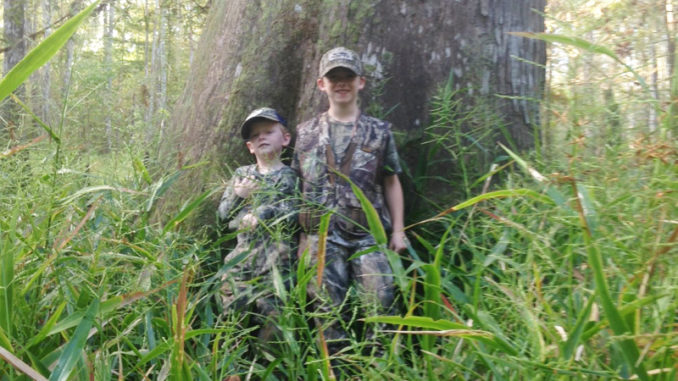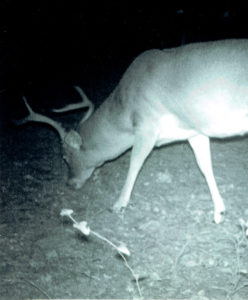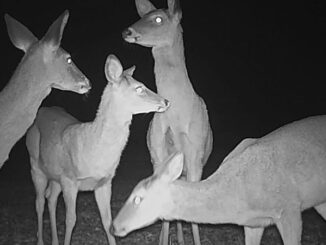
Deer season is in full swing, and it’s time to decide whether to drop the hammer
Days gone by
Way back when, when Baby Boomers were growing up, deer herds were being established around the state and deer numbers were low. As hunting seasons began to open, we would go out and look for deer sign. Tracks, droppings, trails, maybe a buck rub or scrape; this sign gave us an idea that deer were in the area and it might be a good place to hunt. We would check the acorn trees to see what was available, and then check the ground for feeding sign as acorns began to drop. Squirrel hunting was probably the No. 1 hunting activity that Louisiana hunters participated in, and many hunters used that time to scout for deer. Deer observations were cataloged in the old brain, and recalled as the season approached.
I took my 9-year-old grandson William and his 4-year-old brother John to Pearl River WMA for opening day of squirrel season. My goal was to show the boys the swamp, let William have the opportunity to kill a squirrel and to check the Cow Oak acorn crop, which by the way was very good and will be my location for deer season.
Scouting today is somewhat simple
I was the state deer study leader when trail cameras first came on the scene. They basically were a box with a cheap 35mm camera and a sensor unit, but my oh my, how they changed the activity of scouting. Now all a hunter has to do is set up his camera, hook it up with his phone and sit back and let technology do the work.
No doubt many of you use trail cameras to monitor your deer herd and see what is out there. Back in August, I had a 5-gallon bucket of pears that we were not going to use so I dumped them out and set the camera up. Three adult bucks immediately came to the site: Two of them looked like 2 ½-year-olds, and one was a mature shooter. They ate up the pears and disappeared, and I did not photograph them at all in September and October. I did get photos of some does, and then a couple of yearlings (1 ½-year-olds) showed up and pretty much stayed there in October. One was a spike, and the other had not grown any antlers, just big nubs the antlers grow on. The spike is an OK deer that should grow larger over time, but the antlerless yearling needs to be removed.
Up in DeSoto Parish, a large 6-point adult buck showed up at the sawtooth oak trees in September — and it certainly is a buck that should be targeted. A buck that is 3 or 4 years old and has a rack with only six points is probably never going to grow larger. The deer season has been open in Area 2 now for over a month, so many of you have made decisions about pulling the trigger. November is the key rut month for Area 2 ,and most hunters target bucks first and then use December for shooting does. December is the rut month for Area 4, and January will be the rut month for Areas 1 and 6.
Generally the pre-rut period is the time to use cameras and check the status of the deer herd. Bucks are feeding heavily and beefing up for the rut days, and cameras provide good information on the buck age structure. Once the rut starts, cameras could be moved to the active scrapes to continue documenting who’s who in the population.
Most hunters these days have adopted the “let ‘em go, let ‘em grow” philosophy of Quality Deer Management. Many simply use the antler point criteria as the method for deciding what to shoot and not shoot. Many a good young buck has hit the ground because of this.
The best method is to combine both the body characteristics and the antler characteristics, and then make the decision. Length of the main beam and beam circumference are the best antler traits to look at, but these can be hard to determine in the field.
Reporting harvested deer is important

Deciding what does to target is basically a crap shoot. Many try to target large does without fawns, but in the early season the adult does that are producing fawns may be out feeding by themselves. The bag limit has been reduced in Area 4 to just three deer because many have complained of low deer numbers. If an area does have a low population, then certainly it would be wise to pass up adult does that are producing fawns. For the most part, clubs and landowners should simply try to harvest the recommended number of does needed to keep the herd in balance with the habitat and produce healthy deer. Keeping records to monitor the harvest is a must. And tagging and reporting harvested deer is the law.
On wildlife management areas, biologists use doe days to try to achieve the recommended harvest for a location. This works well on an area where hunter numbers remain constant and the hunter effort is good.
On an area like Pearl River, where hunter numbers have dramatically dropped over the past 20 years, it probably would be best to simply let hunters hunt deer during the entire season and not restrict it to just a few doe days. Because hunter numbers are low on the area, the deer kill is low — which leads some to believe that the area has a low deer population.
Most management areas operate under the self-clearing check system, with hunters checking in and out and reporting what they harvest. Bag checks are an integral part of a sound wildlife management program, consequently it is a must for hunters to accurately report their harvest. Poor information will only lead to biologists making poor decisions. In days gone by, biologists and area specialists would be on the area checking hunters and their harvest. Information gathered would pertain to species of kill, sex and age of kill, weights, etc. All of this data was used to determine season success and evaluate the management work being applied to the area.
So whether you hunt on public or private land, reporting harvested deer is a must. These harvest decisions will be used to evaluate the state’s deer herd — and to make deer management decisions.
Hunt hard and be safe, and maybe you will be blessed to drop the hammer on a good one.

